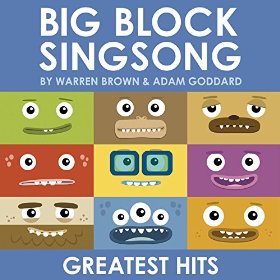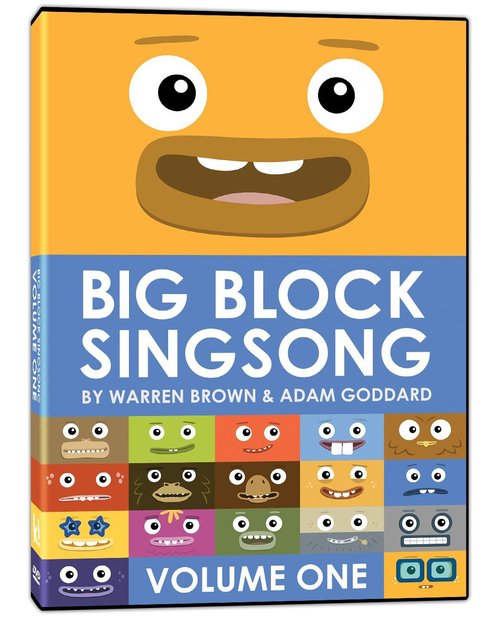It didn't occur to me until I sat down to write this review, but the label that has released the biggest, most diverse set of original music for kids and families over the past several years is a book publisher: Montreal-based The Secret Mountain. They've released 23 albums over the past decade and more -- some totally in French (as would befit a publisher based in Montreal), some in English, some in languages from around the world. Their book/CD collections have featured lullabies, folk music from around the world, even a couple books from the longtime kids musicians Trout Fishing in America. And while some of the albums are re-releases of albums, dressed up with the accompanying book, many (like the Trout Fishing) albums are entirely new.
The 23rd and latest album from The Secret Mountain is a book/CD titled Tomorrow Is a Chance To Start Over, a "Bedtime Story and Dream Songs" collection from Vancouver-based musician Hilary Grist. In both its music and its accompanying pictures, it is to my mind the most modern- looking and sounding release from TSM. Grist has four folk-alt-pop albums for adults under her belt, and this new album sees her turn her attention to that most unconditional of love songs, the lullaby. The title track is one of the most gorgeous songs you'll hear all year, for kids or not. Its message of dropping worries, that tomorrow is, well, a chance to start over, is reassuring for sleepyheads of all ages, and Grist's vocals are somehow soaring without being totally inappropriate for a sleepytime disk.
With the exception of "Cradle Song," a reworking of Brahms' Lullaby, which concludes the album, the rest of the songs are original lullabies. Some of them like "Fall in My Loving Arms" and "I'll Be There sound as if they might have been originally written for an adult audience (though not inappropriately so), others ("Say Goodnight" and "City of Green and Blue") feel more kid-centered. Of course, the beauty of many of the best contemporary lullaby albums lies in part in the ability of the singer to pull together different songs to weave an overall mood of unconditional love. And songs like "Float Away," "Le Petit Oiseau," and "Still" help produce that mood. The album starts out a little "loud" for a lullaby album, but by the end, it's all very
The book features an original story about brother and sister Ira and Isabelle, who find themselves struggling to fall asleep and so take a boat far away but instead of finding a Sendak-ian collection of wild things, are greeted by a robin who encourages them to drop their worries and fly. (The theme leads well into the title track.) The siblings' clay characters were created by Grist, and the photographs -- a first for a Secret Mountain book as opposed to illustrations -- a distinctive mixture of collage and tiny models by an artistic team led in part by Grist's husband Mike Southworth. Babies won't appreciate the photographs, perhaps, but their parents certainly will. You can also hear Grist read the story as the album's first track.
I think that most successful lullaby albums work for both the target age range of kids ages 0 through 5 as well as their parents, and by that measure Tomorrow Is a Chance To Start Over succeeds quite well -- it's a lovely collection of songs, with some memorable images to match. Here's hoping The Secret Mountain continues to bring new artists like Grist into their fold in future years. Definitely recommended.
Note: I received a copy of the book/CD set for possible review.












